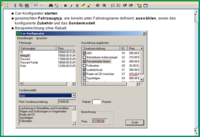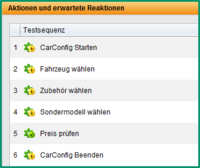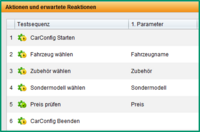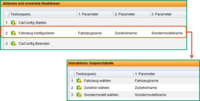Specification Methods
From the simplest test description, with the aid of a formattable test field, up to reusable text modules and the interaction method, the TestBench provides every test designer with the right specification method. At any time, it is possible to switch methods or to combine various methods with each other.
You can simply make a start and develop your skills with the TestBench.
3. The Deployment of Reusable Text Modules (Interactions)
With reusable text modules (interactions), which are recorded and administered centrally in a library, you accelerate the test specification and optimize the maintenance of tests at the same time. In this case, every interaction represents a test step. Changes to interactions have an immediate effect on all tests in which they are used.
4. Parameterisable Interactions
Interactions are parameterisable, which means they can use different test data for each deployment. This facilitates the specification of data-driven tests. The interactions are linked to test data that is also recorded and administered centrally in a library. Central data storage is a huge advantage of the TestBench, making test specifications and their maintenance easier. The combination of reusable test steps with test data is described in the TestBench as the interaction method.
5. Various Abstraction Levels of the Test Description
In order to facilitate the maximum possible modularisation, and thus reusability, of test elements, every interaction can be put together from other interactions. In the same way, data types can be structured, in other words they can be assembled from other data types. This means that several abstraction levels of the test description are established. As a result, the business process can be described in an extremely simple way at the highest level, and then far more precisely at the corresponding lower levels.
![[Translate to Englisch:] [Translate to Englisch:]](/fileadmin/_processed_/8/b/csm_TestBench_EE_Header_6e92f13d84.jpg)




